The rattles have arrived
This week: Happy happenchance; It’s warm in here; The rattles have arrived; All lit up;

Autumn is well and truly with us now here on Hvar. The deciduous trees have turned colour and the leaves are dropping everywhere.
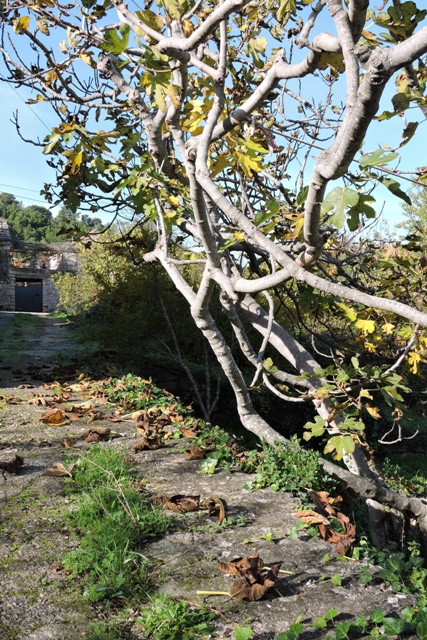
There are some remaining, which have taken on their finery while the majority of the local trees, which are evergreen, have lost their spring green lustre.

There has also been that subtle change in the light and the colour of the sky.
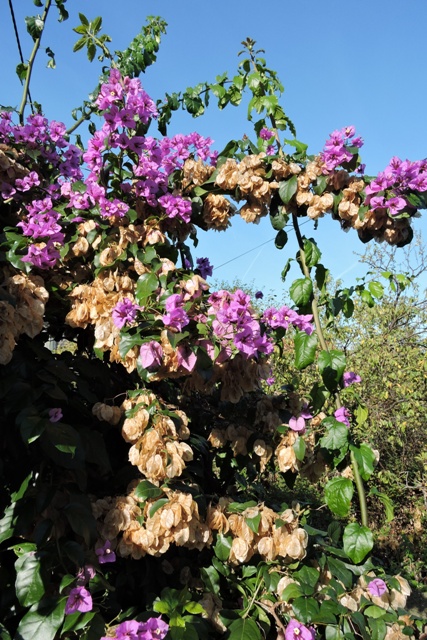
As the earth rotates around the sun and the northern hemisphere is angled away from it, so sunlight has to travel through more of the atmosphere and it changes the intensity of the light and the colour of the sky.
Happy happenchance
The polycarbonate twin wall thermal panels I ordered have arrived and I collected them this week, together with some wood and some rebar. Roof racks are really useful here!
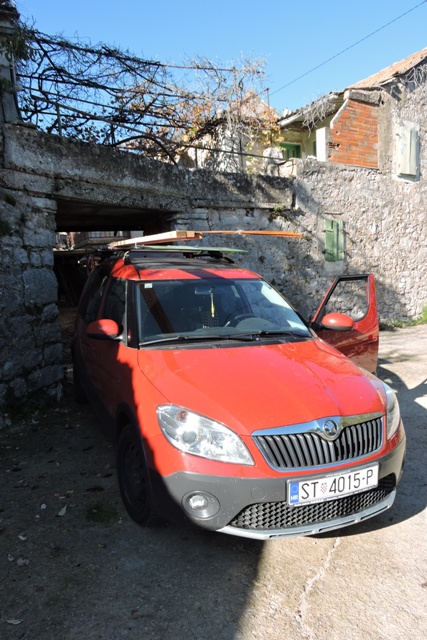
That of course means that once something has arrived, I need to deal with it, preferably PDQ!
I originally built my small greenhouse because I needed to protect the outside door to one of my living areas from cold. Attaching polycarbonate to a wooden frame is a quick way to build a sturdy enclosure.

It is not as efficient or as draught free as a purpose built conservatory with double glazing, but this part of my estate was (and still is!!) going to be developed. Until this building work happens, there is absolutely no point in making anything permanent.
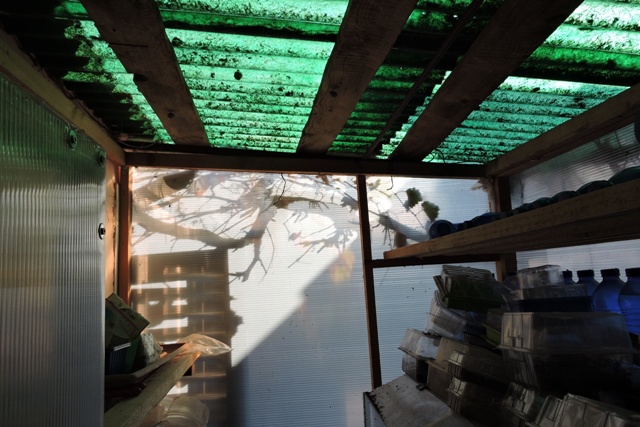
When I built the structure, being temporary, I used bubble wrap as an inner layer, under the greenhouse half of a translucent ribbed panel roof which was already there.
Five years on, I decided I had better make it a little more permanent as I suspect I will still have it for the next two winters.
At the cost of €30 for the two sheets, it is not going to break the bank. If I had known it would take so long to get building permission, I would probably have done it sooner. But the corollary is that the bubble wrap worked.
Removing the bubble wrap was easy but I discovered that I needed to lower the wooden frame a little to take the panels. I couldn’t get at one of the screws holding the wood up, because I had built it all in situ.
Trying to work around this conundrum, and not wanting to resort to a nail bar, I discovered the wooden frame had been screwed together blind, but I could access the screws from the outside via a gap. That is the gap I am now trying to seal. It is pure happenchance!
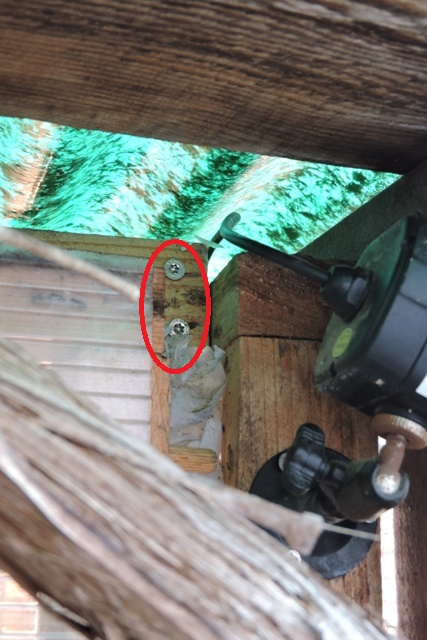
This is another reason I always screw rather than nail things together.
So with an extension bit, it was a simple job to undo the screws that held the frame together, then access the screw on the inside to lower it by 6mm. Job over and done with in about an hour.
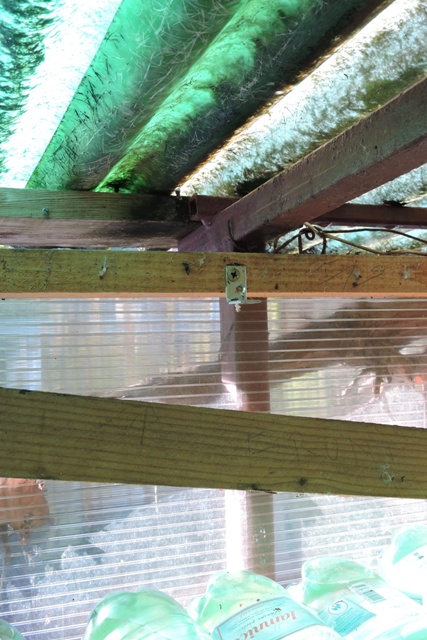
It’s warm in here
I really have not used the greenhouse to its full potential.
I have overwintered some tender plants inside and I built a heated propagator which I have used to raise some cuttings and seeds.
But although I have collected a goodly assortment of seed boxes and trays, and an equal number of seeds, I really have not tried to do anything more than the most basic of things.
I’ve decided that with the new roof insulation in place, I really should use it more. I created the thermal reservoirs of the water bottles on the south facing shelves to absorb the heat during the day and then release it slowly overnight.
This week, when the outside temperature has been 19ºC, it has been over 30ºC inside. Of course the temperature drops at night, but it still remains warm so I should be able to grow all kinds of things from seed.
I asked Charley about how to cut the polycarbonate sheet. He had a good PDF on building greenhouses. So armed with this knowledge, I cut the pieces to size with my oscillating cutter.
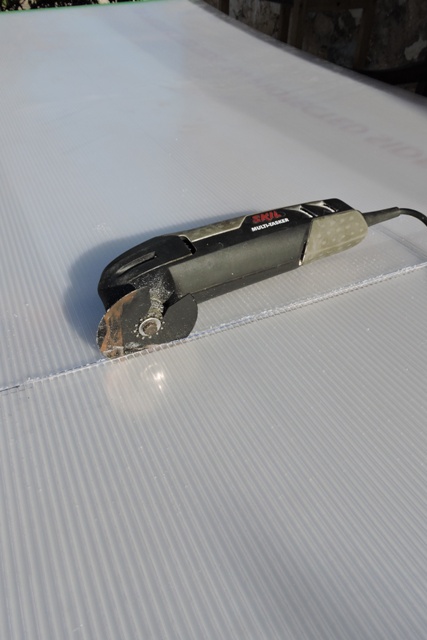
There was a problem though. The larger of the two pieces at two meters long and a meter wide, would not fit between the wooden racking so that I could manoeuvre it into place. I cut it down the middle and then it easily slipped into the recess above the wooden securing battens.
Simply removing the draughts has meant that the greenhouse is significantly warmer. It will provide a very pleasant working environment in the winter.
It is just a shame that there isn’t room for a chair, coffee table and somewhere to put my feet up!

The new roof panels combined with the hot water bottles which line the south facing walls and the heated propagator means that I will have a very nice warm space to raise plants.
The rattles have arrived
Way back in the summer, when the days were baking hot and I was cooling my heels looking for the ideal plants to grow in my weed ridden Citrus orchard, I came across the Yellow Rattle, Rhinanthus minor.
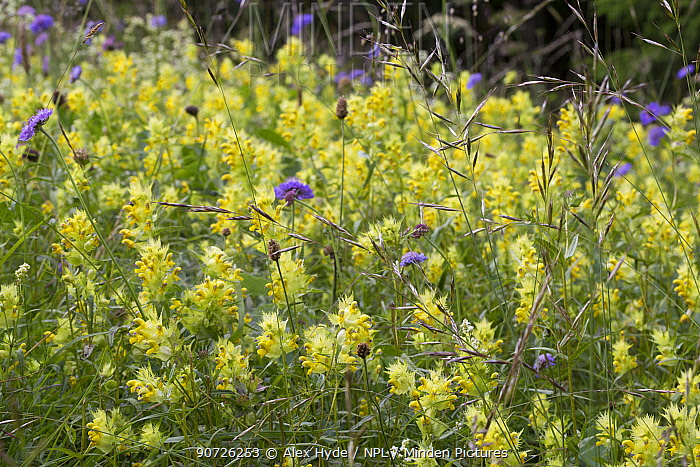
It seemed like the ideal plant for me because it likes a poor soil (I have plenty) and it is a hemi-parasitic, feeding off the roots of other weeds.
There is nothing quite like getting someone else to do your work for you, in this case photosynthesis, and then you taking the sugars and starches!
The seeds arrived this week. Just 5gms, so enough for 15 square meters, but what the seeds do require is a period of winter cooling to get the seeds to germinate. They have to be sown in contact with the soil too.
Since the September rains, I have had a lot of weeds grow in the orchard, but after a couple of fairly sunny and warm weeks, the soil is in perfect condition to hoe off the weeds.
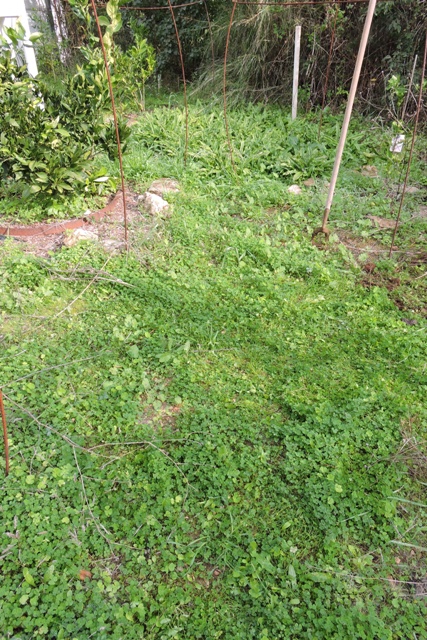
I’ve really got to make a decision about where I sow it.
By that I mean, do I try and sow everywhere between the citrus trees, or maybe just try this year and do half. Either way, I needed to get on top of the weeds.
In the end, the amount of seed determined where and how big an area I would plant with it.
I sharpened the blade on the hoe with my power file but it still took the best part of a morning to hoe perhaps ⅓ of the orchard.
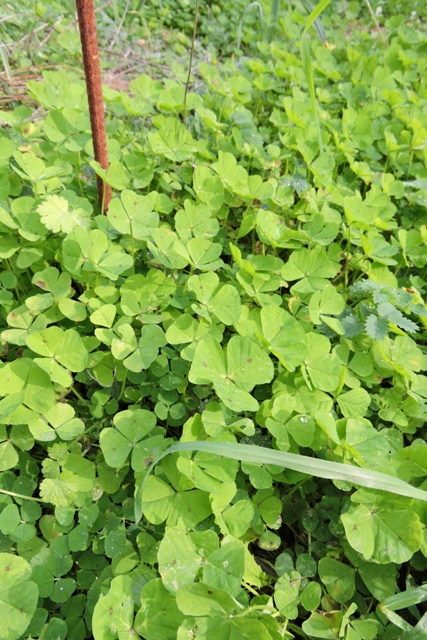
As with all good projects, there needs to be some measurement of the results, so I planted the seeds where there is grass and legume weeds growing. I’ve never seen a Yellow Rattle, so have no idea what they will look like when they germinate next spring.
I’ve kept a half dozen seeds back to plant in a pot with sterilised soil, which will go out into the orchard, but then at least I can see what the seedlings look like when they germinate.
The amount of seeds I bought were nowhere near enough to cover all the orchard, but as this is experimental horticulture, I’ll see what happens next year. If they grow and flower, I should be able to collect seed myself and if they don’t thrive, I’ll look for something else interesting to plant instead.
Lastly, I found my irrigation plan of the orchard and have superimposed on top the area where I have planted the seeds.
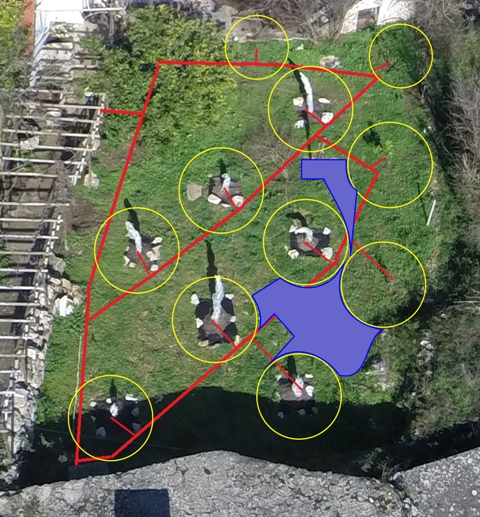
I need to take an updated photo of the orchard this winter after I have done a bit of re-modelling because this photo doesn’t show the bed of Madona Lillies I have planted, which the Yellow Rattle have been planted around.
I’ll add the job to my list.
All lit up
I have lit the wood stove this week. It is the first time I have lit the fire since February.
Although the sun has been warm this week, there has been a lot of humidity with heavy dews overnight and as soon as the sun drops behind the hills, the temperature quickly falls.
It has also been one of those weeks when it has been warmer outside than indoors, and the rooms have felt a little damp.
Having connected the central heating up and tested it without the fire on, I decided to light the stove at tea time on Thursday. The pump cut in right on schedule when the water pipes reached 40ºC and within 15 minutes I had warm water in all the radiators.
I lit the fire again on Friday afternoon when it was still daylight so I could check more thoroughly for any leaks.
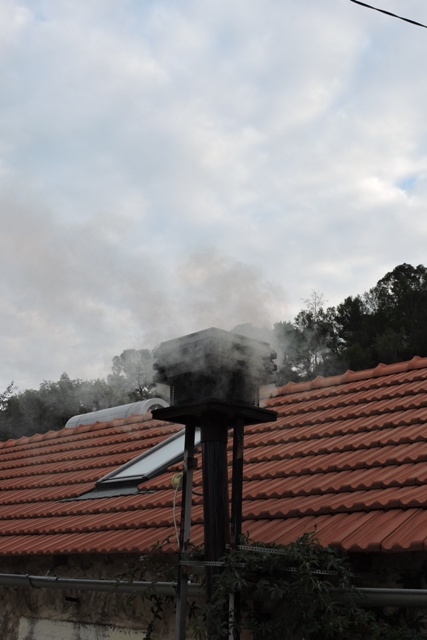
There were none, but what I did discover was that a little heat was escaping from the pipes where I have some uninsulated 90º joints.
This is another of those items that I need to go to Bauhaus on the mainland to get. The plumbers merchant here just does not have the sophisticated stock that I can get at Bauhaus.
I could of course try and fabricate my own by cutting pieces of insulation, but I’ve bought the correct items from Bauhaus before, so I will have to go over again and get some.
We are still nowhere near proper winter temperatures. It will be another six weeks or so, around the last week of December that we have the coolest period of the year.
However lighting the wood stove and having the central heating on for just three hours in the evening has removed the chill and damp feeling in the rooms. NCG
4 Responses
John Bailey
Sounds like you will be warm and cosy over the winter months Norman. Once again enjoy following your weekly blog.
Tony Griggs
We’ve got that polycarbonate on end parts of our deck roofing Norman. It’s tough, effective & looks great.
Brian Homans
I am 100% with you on using screws instead of nails. Have learned some hard lessons over the years!
Marcy
Hi Norman. What a great blog especially the yellow rattle. I’ve also heard clover can kill weeds.but no clue if that’s accurate. I’m excited to hear about your green house. I’d love build a small one
Have a great week and stay safe. Marcy